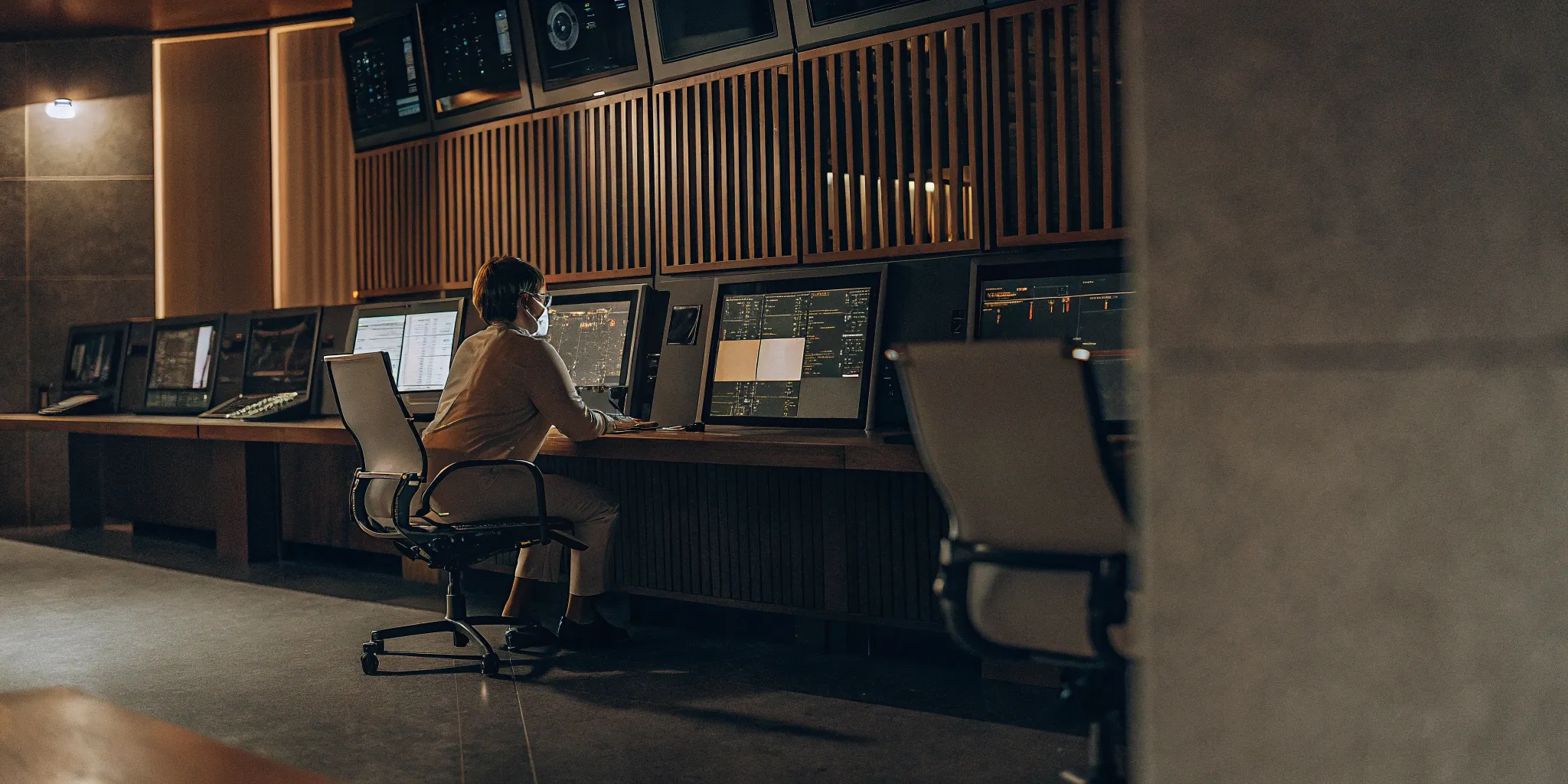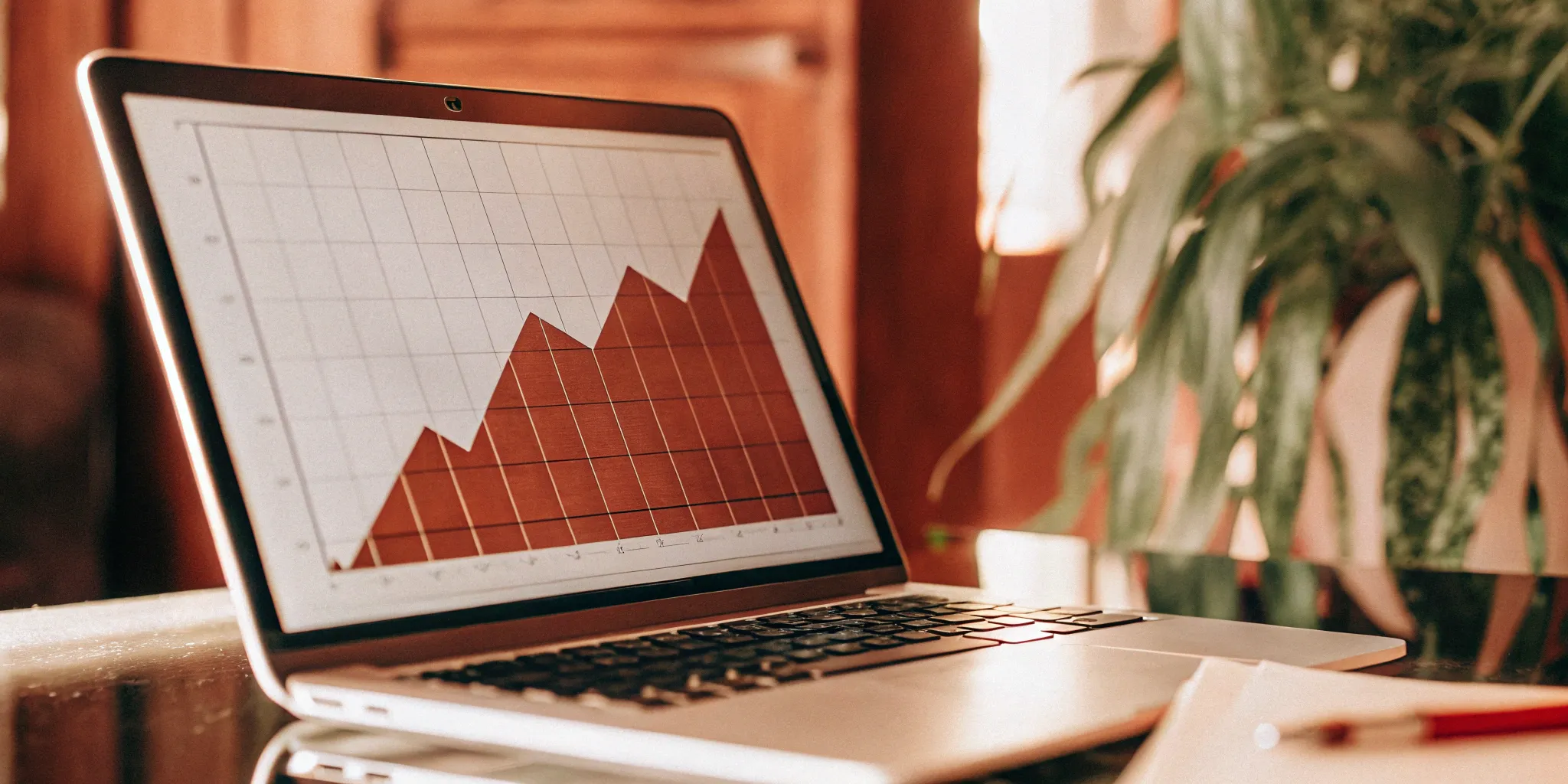Tired of the stress of leveraged forex trading? There’s a calmer, more sustainable way to approach the forex market: unleveraged forex trading. It prioritizes capital preservation and steady growth, minimizing the risks of borrowed funds. This guide breaks down unleveraged forex trading, offering practical strategies and addressing common questions. Whether you’re new to forex or seeking a less risky approach, this guide gives you the tools to trade with confidence.
Key Takeaways
- Unleveraged trading limits risk, requiring more capital but offering greater control: Trading with your own funds eliminates amplified losses from leverage, making it a safer, albeit more capital-intensive, approach.
- Smaller profits, smaller losses: Unleveraged forex trading necessitates patience and a long-term perspective, focusing on consistent gains rather than rapid, high-risk returns.
- Risk management remains essential: Even without leverage, a robust risk management plan, including diversification and stop-loss orders, is crucial for protecting capital and achieving consistent profitability.
What is Unleveraged Forex Trading?
Unleveraged forex trading might sound complicated, but it’s a simple concept. It just means trading currencies without borrowing money from your broker. You’re trading with your own capital. This is the opposite of leveraged trading, where you increase your buying power—and your potential profit or loss—with borrowed funds.
Unleveraged Forex Trading Defined
In unleveraged forex trading, the amount you can trade depends on the cash balance in your trading account. If you have $10,000 in your account, you can trade up to $10,000 worth of currency pairs. This means your maximum possible loss is your initial investment. This offers a key benefit: risk management. You’ll never lose more than you invest, which can be helpful for those new to forex or who prefer less risk.
Leveraged vs. Unleveraged Forex Trading
Leverage is a double-edged sword. It can increase your profits, but it also increases your losses. For example, with a leverage ratio of 30:1, for every $1 you have, you control $30 worth of currency. A small market shift can lead to big gains or big losses. Even a small 3.33% move against your position could wipe out your entire initial investment.
Unleveraged trading offers a more conservative approach. Since you’re not using borrowed money, your losses are limited to the capital you’ve invested. This makes it easier to manage risk and handle market volatility. While your potential gains might be smaller at first, you’re protecting yourself from large losses. It’s a balance between potential reward and protecting your capital.
What is Margin in Forex Trading?
Margin is essentially a good faith deposit you provide to your forex broker to open and maintain a leveraged trade. It’s a portion of your funds that the broker sets aside to cover potential losses. Think of it as collateral for the loan you’re receiving to control a larger position than your cash balance would typically allow. For example, with a 1% margin requirement, you can control $100,000 worth of currency with just $1,000 of your own capital.
Margin is usually expressed as a percentage of the total trade value. A 2% margin requirement on a $50,000 trade means you need to deposit $1,000 as margin. This $1,000 acts as a buffer against potential losses. The remaining $49,000 is essentially loaned to you by the broker, amplifying your buying power—and your potential profit or loss. This use of borrowed funds is what we call leverage.
Understanding margin is crucial for managing risk, especially when using leverage. A lower margin requirement allows for higher leverage, magnifying both potential profits and losses. Conversely, a higher margin requirement means lower leverage and reduced risk. While higher leverage can lead to larger profits, it also significantly increases the risk of substantial losses. At FN Capital, our AI-powered system, FAST AI, prioritizes capital preservation and consistent returns, allowing investors to access the benefits of forex trading with carefully managed risk parameters.
Why Trade Forex Without Leverage?
Trading forex without leverage offers several key advantages, especially for those prioritizing capital preservation and a more controlled trading environment. Let’s explore some of the core benefits:
Minimize Risk & Limit Losses
One of the most significant advantages of unleveraged forex trading is the reduced risk. When you trade without leverage, your potential losses are capped at the amount of capital you’ve invested. This makes it a considerably safer approach, especially for those new to forex trading. With leveraged trading, even small market movements against your position can quickly magnify losses, sometimes exceeding your initial investment. Unleveraged trading removes this risk, providing a more secure foundation for learning and implementing your trading strategies.
Simplify Forex Risk Assessment
Unleveraged trading simplifies risk assessment. Without the complexities of managing large leveraged positions or the constant worry of margin calls, you can focus on developing a disciplined and less stressful trading approach. This allows you to concentrate on market analysis, strategy development, and consistent execution without the added pressure of potentially amplified losses. This streamlined approach can lead to more informed decisions and a clearer understanding of your trading performance.
Protect Your Trading Capital
Preserving your trading capital is paramount for long-term success in the forex market. Unleveraged trading helps you achieve this by eliminating the risk of margin calls. These calls occur when your account equity falls below a certain level, requiring you to deposit more funds to maintain your open positions. These unexpected demands can disrupt your trading plans and restrict your flexibility. By trading without leverage, you avoid this scenario altogether, ensuring your capital remains available for future trades and reducing the emotional strain associated with potential margin calls. This approach allows for more strategic capital allocation and a more sustainable trading journey.
Reduced Psychological Stress
Let’s be honest: trading can be stressful. Leverage, while potentially lucrative, amplifies that stress. The constant need to monitor open positions and the fear of a margin call can take a toll. Unleveraged trading offers a refreshing change. Knowing your maximum possible loss is capped at your invested capital creates a sense of control and peace of mind. This reduces psychological pressure, allowing you to approach trading with more clarity and focus, leading to better decisions. You can concentrate on developing a disciplined trading approach instead of constantly calculating margin requirements and worrying about market swings. Trading without leverage provides a more secure foundation, especially for newcomers. It simplifies risk assessment and eliminates margin call worries, promoting a calmer, more focused trading experience.
Challenges of Unleveraged Forex Trading
Trading forex without leverage presents unique challenges. While it significantly reduces risk, it also requires adjustments to your capital, profit expectations, and overall trading strategies.
Understanding Capital Requirements
One of the most significant hurdles in unleveraged forex trading is the substantial capital required. Since you’re not using borrowed funds, you’ll need a much larger account balance to open positions of a meaningful size. For example, to trade a standard lot (100,000 units of currency) in EUR/USD, you would need $100,000 or more in your account. This high capital requirement can be a barrier for many retail traders.
Profit/Loss Calculation Example
Let’s illustrate how profit and loss are calculated in unleveraged forex trading with a simple example. Assume you have $10,000 in your trading account and you decide to buy 1,000 units of EUR/USD at an exchange rate of 1.1000 (meaning 1 EUR = 1.1000 USD). Your total investment is $1,100 (1,000 units * 1.1000).
Scenario 1: Profit
If the EUR/USD exchange rate moves up to 1.1100, your 1,000 units are now worth $1,110. Your profit is calculated as follows:
Profit = (Selling Price – Buying Price) * Units = (1.1100 – 1.1000) * 1,000 = $10
Your total account balance would then be $10,010 ($10,000 initial capital + $10 profit).
Scenario 2: Loss
If the EUR/USD exchange rate moves down to 1.0900, your 1,000 units are now worth $1,090. Your loss is calculated as follows:
Loss = (Buying Price – Selling Price) * Units = (1.1000 – 1.0900) * 1,000 = $10
Your total account balance would then be $9,990 ($10,000 initial capital – $10 loss).
As you can see, in unleveraged trading, your profits and losses are directly proportional to the change in the exchange rate and the number of units you trade. This direct correlation simplifies risk assessment and makes it easier to manage your trades. Your maximum possible loss in unleveraged trading is limited to your initial investment, providing a significant safety net. This can be especially helpful for newer traders finding their footing in the forex market. For those interested in exploring automated, unleveraged trading solutions, platforms like FN Capital offer AI-powered systems designed to manage risk effectively while aiming for consistent returns.
Evaluating Profit Potential
While unleveraged trading limits losses, it also impacts profit potential. The percentage gains will be smaller compared to leveraged trading, requiring more patience and a longer-term outlook. For instance, a 100-pip move on a standard lot with no leverage yields a $1,000 profit, whereas the same move with 10:1 leverage would yield $10,000 (though the potential loss would also be magnified). This difference highlights the need to carefully evaluate profit potential and adjust your expectations. Unleveraged trading necessitates more disciplined trading, as smaller profits require greater consistency.
Adapting Your Forex Strategies
Unleveraged trading often requires a shift in strategy. High-frequency trading and scalping, which rely on small, frequent gains amplified by leverage, become less viable. Instead, traders may find more success with longer-term strategies based on fundamental or technical analysis. Avoiding margin calls is a key benefit of unleveraged trading, offering more flexibility and reducing the pressure of potential forced liquidations. However, the inherent link between risk and reward means that while the risk is lower, so too is the potential for higher profits. Lower risk often translates to lower reward, requiring a careful recalibration of your approach, focusing on sustainable growth over rapid gains.
Limited Flexibility for Diversification
Without leverage, the capital in your trading account directly dictates how many positions you can hold. This can impact your flexibility to diversify across different currency pairs. A smaller account balance might require you to concentrate your investments in fewer pairs, potentially increasing your exposure to the performance of those specific currencies. With a larger account, diversification is easier, allowing you to spread your capital and potentially reduce overall risk. This is a key factor when planning your unleveraged forex trading strategy.
Limited Number of Trades
Unleveraged forex trading often means making fewer trades than with leveraged trading. This is because each trade requires a more significant portion of your capital. For example, with $10,000 and a risk tolerance of 1% of your capital per trade ($100), you’ll make significantly fewer trades with a standard lot (100,000 units) than with a mini-lot (10,000 units) or a micro-lot (1,000 units). This limit on the number of trades can affect your overall profit potential, as you’ll have fewer opportunities to capitalize on market movements. It also requires a more selective approach to identifying high-probability trades. This shift in trading frequency demands patience and a focus on long-term growth over rapid, short-term gains. Consider exploring alternative solutions like FN Capital’s FAST AI algorithm, which executes thousands of trades per month, maximizing opportunities within the EUR/USD pair, even for accounts with limited capital.
Is Unleveraged Forex Trading Right for You?
Trading forex without leverage isn’t for everyone, but it is a smart choice for certain traders. Let’s look at a few specific examples.
Institutional Investors
Large institutional investors, like pension funds or asset management companies, often trade forex without using leverage. Because they have substantial capital, these investors can generate significant profits even from small price movements. They prioritize preserving capital and generating consistent returns over high-risk, high-reward plays. As LiteFinance points out in their guide to forex leverage, institutional investors can still make substantial profits without relying on borrowed funds.
Risk-Averse Traders
If you’re new to forex or have a low risk tolerance, trading without leverage is a safer way to learn the ropes. It limits your potential losses to the amount you’ve invested, preventing a few bad trades from wiping out your entire account. Nurp explains this benefit in their article on unleveraged forex trading, highlighting it as a particularly good option for beginners. Unleveraged trading allows you to gain experience and confidence without taking on excessive risk.
Long-Term Investors
Long-term forex traders, especially those with larger account balances (think $100,000 or more), often prefer unleveraged trading. These traders focus on fundamental analysis and long-term market trends, holding positions for weeks, months, or even years. They can ride out short-term market fluctuations more easily without the pressure of margin calls. Axiory discusses this approach in their piece on mastering forex with no leverage, emphasizing the ability to absorb losses more easily. This approach allows for more patience and strategic decision-making without the constant worry of magnified losses.
Short-Term vs. Long-Term Traders and Leverage
Your trading style and time horizon often influence whether leverage is right for you. Short-term traders, like scalpers and day traders, might find unleveraged trading restricts their usual approach. These strategies often depend on small, frequent gains, magnified by leverage. Without the boost of borrowed capital, generating substantial profits quickly becomes difficult. As TraderFactor explains in their guide to unleveraged forex trading, high-frequency trading and scalping are less effective without leverage.
Long-term traders, however, often prefer trading without leverage. Especially those with larger account balances, these traders focus on fundamental analysis and long-term market trends. They hold positions for weeks, months, or even years, riding out short-term market fluctuations. This patient approach aligns well with the reduced risk of unleveraged trading. Axiory discusses this in their article on forex trading without leverage, noting that traders with substantial capital often choose this method.
The best approach—leveraged or unleveraged—depends on your risk tolerance, trading style, and available capital. Carefully consider your goals and resources to determine the right path for you. If you’re looking for a way to access the forex market with institutional-grade AI and risk management, explore FN Capital’s pricing and licensing options.
Unleveraged Forex Trading Strategies
Trading forex without leverage requires a different approach than leveraged trading. Here are a few strategies to consider:
Focus on Long-Term Forex Trading
Unleveraged trading lets you hold positions for extended periods, riding out short-term market fluctuations and aiming to capitalize on larger, long-term trends. This patient approach reduces the impact of daily volatility and allows fundamental factors to play out. While leveraged trading often focuses on short-term gains, unleveraged trading can better align with long-term market analysis.
Using Fundamental Analysis
Understanding economic indicators and news events is crucial for unleveraged forex trading. Analyzing factors like interest rates, GDP growth, and geopolitical events can inform your predictions about currency movements. This approach helps you identify currencies poised to appreciate or depreciate over time, setting the stage for profitable long-term trades. For example, if a country’s economic outlook improves, its currency may strengthen against others.
Applying Technical Analysis
Technical analysis tools and indicators can also be valuable in unleveraged trading. Chart patterns, trend lines, and oscillators can help pinpoint potential entry and exit points, even without leverage. Combining technical analysis with fundamental analysis offers a comprehensive market view, leading to more informed trading decisions. For instance, a trader might use support and resistance levels identified on a price chart to determine optimal entry and exit points for a trade.
Proper Position Sizing in Forex
Proper position sizing is paramount in any trading strategy, but it’s especially critical when trading without leverage. Since potential losses are directly tied to the invested capital, managing your position size is key to limiting risk. A common recommendation is to risk only a small percentage (e.g., 1% to 2%) of your trading capital on any single trade. This disciplined approach protects your account from significant drawdowns and helps you withstand periods of market volatility. For example, with a $10,000 account, a 1% risk limit would mean risking a maximum of $100 on any given trade.
The 5-3-1 Trading Strategy
The 5-3-1 Forex trading strategy offers a structured approach to managing complexity and promoting consistency. It emphasizes focusing on five currency pairs, three trading systems, and a single timeframe and trading session. This streamlined approach helps traders avoid becoming overwhelmed and encourages a deeper understanding of their chosen markets. By concentrating on a smaller set of variables, traders can refine their strategies, identify recurring patterns, and make more informed trading decisions. For unleveraged traders, this disciplined method can be particularly beneficial, allowing for more focused analysis and potentially more consistent results.
Focusing on Low-Volatility Currency Pairs
When trading forex without leverage, focusing on low-volatility currency pairs, such as EUR/USD or USD/JPY, can be a smart strategy. These pairs generally experience more stable price movements, which reduces the risk of large, rapid swings that could significantly impact your capital, especially when not using leverage. This stability allows you to hold positions for extended periods, aligning with a more patient, long-term trading strategy. As Axiory highlights in their guide on mastering forex with no leverage, this approach lets you ride out short-term market fluctuations and focus on capturing larger, long-term trends. FN Capital’s FAST AI algorithm, for example, focuses exclusively on the EUR/USD pair due to its high liquidity and relatively stable nature, making it well-suited for unleveraged trading strategies. This focus on stability and long-term trends can be particularly beneficial for unleveraged traders, allowing them to capitalize on gradual price movements without the heightened risk associated with more volatile currency pairs.
Managing Risk in Unleveraged Forex Trading
Even though unleveraged forex trading significantly reduces risks compared to leveraged trading, it’s still crucial to manage risk effectively. Protecting your capital should always be a top priority. Here’s how to approach risk management when trading forex without leverage:
Create a Risk Management Plan
A solid risk management plan is your roadmap in the forex market. Trading forex without leverage offers a key advantage: no margin calls. Since you’re using your own capital, you won’t face the risk of your broker liquidating your positions due to insufficient funds, as explained in this guide to unleveraged forex trading. This allows you to focus on your long-term strategy without constantly monitoring margin levels. Your plan should outline your risk tolerance, the maximum capital you’re willing to risk per trade, and your overall trading goals. This structure creates a more stable and predictable trading environment.
Setting Stop-Loss and Take-Profit Levels
Stop-loss and take-profit orders are essential tools for any forex trader, especially in unleveraged trading. These orders automate your exit points, helping you lock in profits and limit potential losses. Setting these levels maintains discipline and reduces emotional decision-making during market fluctuations. Without the added pressure of managing leveraged positions, you can execute trades more methodically. Remember, stop-loss orders aren’t foolproof; slippage can occur during periods of high volatility.
Diversify Your Forex Portfolio
Diversification is a fundamental principle of risk management. Don’t put all your eggs in one basket. By spreading your investments across various currency pairs, you reduce your exposure to any single currency’s performance. The right forex trading tools can help you analyze different markets and make informed diversification decisions. This approach helps balance your portfolio and potentially mitigates losses if one currency pair moves against you.
Essential Tools for Unleveraged Forex Trading
Trading forex without leverage requires a slightly different approach than leveraged trading. You’ll still need the right tools and resources to support your strategy. This includes choosing a suitable broker, a robust trading platform, and reliable educational resources.
Choosing the Right Forex Broker
When trading forex without leverage, your broker needs to offer accounts that accommodate this style. Many brokers do, but it’s crucial to confirm this feature before opening an account. Remember, you’ll need a larger account balance to trade the same amount of currency compared to leveraged trading, so factor this into your broker selection process. Look for brokers known for their competitive spreads and transparent fee structures, as these costs become more noticeable when trading larger sums.
Specific Broker Recommendations for Unleveraged Trading
Finding the right broker for unleveraged trading requires careful consideration. Interactive Brokers, for example, allows you to trade without leverage, meaning you’re buying the currency outright. However, keep in mind that this approach significantly limits your trade size and, consequently, your potential profit, especially if you’re working with a smaller account. This limitation is a key factor to consider when evaluating your broker options. Make sure to research and compare different brokers to find one that aligns with your capital and trading goals.
Importance of Choosing a Regulated Broker
Regardless of your trading style, choosing a regulated broker is paramount. Regulation provides a layer of security and oversight, ensuring your funds are held securely and that the broker operates within established guidelines. This protects your investments and maintains trust in the forex market. A regulated environment offers greater transparency and accountability, essential for a positive trading experience. Look for brokers regulated by reputable financial authorities to ensure a secure trading environment.
Alternatives like Nadex
If you’re interested in trading without the complexities of traditional forex, consider alternatives like Nadex. Nadex offers binary options and spreads, providing a different way to participate in the currency markets. These instruments can offer defined risk and reward profiles, appealing to those seeking more controlled trading environments. Some traders, as discussed in this Reddit thread, suggest exploring these options to manage risk without relying heavily on leverage. However, thoroughly research and understand these instruments before incorporating them into your trading strategy. Binary options, in particular, can be complex and carry significant risk.
Selecting the Best Trading Platforms
A user-friendly and powerful trading platform is your command center for executing trades and analyzing the market. Features like advanced charting tools, real-time data feeds, and a wide range of technical indicators are essential for informed decision-making. IG’s forex trading platform provides access to a variety of these tools and analysis resources, including up-to-the-minute market news. Consider your trading style and technical analysis needs when selecting a platform.
Finding Educational Resources
Even seasoned traders can benefit from continuous learning. The forex market is dynamic, and staying informed about economic trends, geopolitical events, and evolving trading strategies is key to success. Many brokers offer educational resources to help you sharpen your skills. For instance, XM provides a comprehensive learning center with free forex trading courses. These courses often cover essential topics such as fundamental and technical analysis, risk management, and effective trading strategies. Understanding the nuances of unleveraged trading is vital, and readily available resources can guide you through this approach.
Leverage as a Tool, Not Inherent Risk
Let’s talk about leverage—it’s powerful, but often misunderstood. Think of it like a magnifying glass: it intensifies the sun’s heat, but it can also easily burn you if you’re not careful. In forex, leverage amplifies both profits *and* losses. A small market shift can mean big gains, but it can also quickly decimate your account if the market moves against you. That’s the double-edged sword DailyForex describes.
Now, imagine trading *without* that magnifying glass. You’re working with your own capital, so your potential losses are limited to your investment. This doesn’t mean trading is risk-free—it just means you’re in control. LiteFinance explains that unleveraged trading offers a more conservative approach, allowing you to manage risk and handle market volatility more effectively. You’re building a solid foundation, focusing on consistent gains rather than chasing high-risk, high-reward scenarios.
This shift in perspective also changes your trading psychology. Without the constant pressure of potentially amplified losses, you can develop a disciplined and less stressful trading approach. You’re not making impulsive decisions based on fear or greed; you’re making informed choices based on your analysis and strategy. This calmer, more focused approach, as TraderFactor discusses, can lead to better long-term results. Remember, even without leverage, risk management is crucial. Protecting your capital is always the top priority.
Unleveraged Forex Trading: Myths vs. Reality
Several misconceptions surround unleveraged forex trading. Let’s clear them up.
Myth: Limited Profit Potential
Some traders believe that significant profits are impossible without using leverage. While it’s true that you’ll need more capital upfront to see similar returns as leveraged trading, unleveraged trading is far from profitless. Think of it this way: your gains might grow slower, but they grow steadily and safely. Focus on consistent gains and preserving your capital, and you’ll see substantial returns over time. As Axiory points out, unleveraged trading offers a viable path to success for those who value steady growth. Remember, slow and steady wins the race.
Myth: Only for Beginners
Another misconception is that unleveraged trading suits only beginners. While it’s an excellent way for new traders to practice without risking significant capital, experienced traders also benefit from its advantages. Traders with large accounts, or those with long-term goals, often prefer unleveraged trading. It’s also a smart strategy for traders recovering from losses, allowing them to rebuild their accounts with less risk. Unleveraged trading isn’t about skill level; it’s about your financial goals and risk tolerance.
Myth: Few Trading Opportunities
Some assume that unleveraged trading limits opportunities. In reality, it opens doors to a different kind of trading. Without the pressure of margin calls, which can disrupt trading plans, you gain the freedom to make clear-headed decisions. TraderFactor highlights how avoiding margin calls allows for more strategic, long-term trading. This approach allows you to focus on fundamental analysis and long-term market trends, rather than reacting to short-term price fluctuations. Unleveraged trading isn’t about limiting opportunities; it’s about creating different ones.
Getting Started with Unleveraged Forex Trading
Getting started with unleveraged forex trading involves a shift in mindset. It requires a focus on capital preservation and long-term growth rather than chasing quick, high-risk returns. Here’s how to approach it:

Setting Realistic Trading Goals
Unleveraged trading offers key advantages, such as limiting losses and promoting disciplined trading. However, it also demands more capital upfront and typically yields lower profits. Acknowledge these realities from the outset. Trading forex without leverage requires a different approach to profit expectations. Don’t expect to double your account overnight. Instead, focus on steady, sustainable growth. Calculate how much capital you need to comfortably trade your desired lot sizes without risking a large percentage of your account on any single trade.
Building a Forex Trading Plan
A solid trading plan is essential for any forex trader, but it’s especially crucial when trading without leverage. Your plan should outline your entry and exit strategies, risk tolerance, and overall trading goals. Since unleveraged trading eliminates the risk of margin calls, you have more flexibility to weather market fluctuations. This allows you to stick to your plan even during periods of volatility. Clearly define your trading style, whether it’s day trading, swing trading, or long-term investing, and tailor your plan accordingly.
Implementing Risk Management
While unleveraged trading inherently reduces risk, it doesn’t eliminate it entirely. A robust risk management strategy is still essential. This includes setting appropriate stop-loss and take-profit orders for every trade. Remember, even without leverage, significant market swings can impact your capital. Protecting your investment requires careful planning and disciplined execution. Diversifying your trades across different currency pairs can also help mitigate risk. By spreading your capital, you reduce your exposure to any single currency’s performance.
Related Articles
- AI vs. Human Trading Performance: An Objective Comparison – FN Capital
- How to Create an Automated Trading Strategy (Step-by-Step) – FN Capital
- AlgoTrade: AI-Powered Trading Made Simple – FN Capital
- Your Guide to Institutional Trading Platforms – FN Capital
Frequently Asked Questions
Is unleveraged forex trading only for beginners? Not at all. While it’s a good starting point for new traders, experienced traders, especially those with substantial capital or focusing on long-term strategies, often prefer unleveraged trading. It allows them to focus on market analysis and long-term trends without the constant pressure of margin calls.
I don’t have a lot of capital. Can I still trade forex without leverage? Yes, you can. However, your position sizes will be smaller, and it might take longer to see substantial returns. Focus on consistent gains and preserving your capital. Consider starting with a smaller account and gradually increasing your investment as your capital grows.
What are the main advantages of unleveraged forex trading? The primary benefits are reduced risk and simplified risk management. Since you’re trading with your own funds, your losses are limited to your initial investment, and you avoid the risk of margin calls. This creates a more stable and less stressful trading environment.
What kind of returns can I expect from unleveraged forex trading? Returns in unleveraged trading are directly related to the amount of capital you invest and the success of your trading strategy. While potential profits might be smaller compared to leveraged trading, they grow steadily and safely. Focus on consistent gains and preserving your capital for long-term success.
What’s the best way to manage risk in unleveraged forex trading? Even without leverage, risk management is crucial. Develop a comprehensive trading plan that outlines your risk tolerance, entry and exit strategies, and profit targets. Use stop-loss and take-profit orders to manage potential losses and secure profits. Diversifying your investments across different currency pairs can also help mitigate risk.





